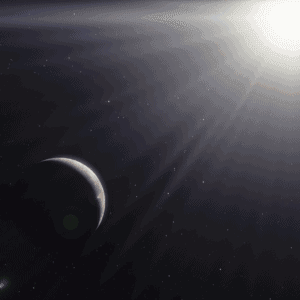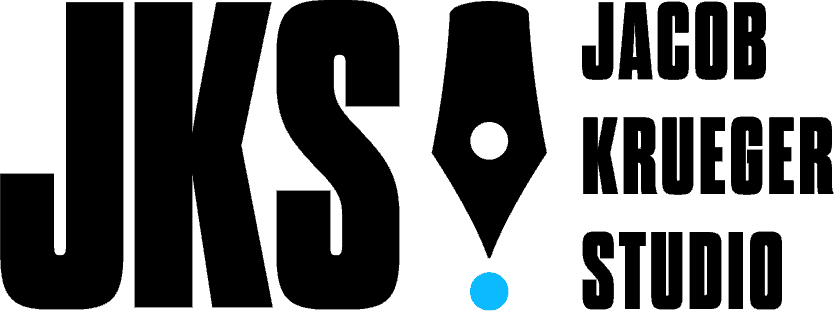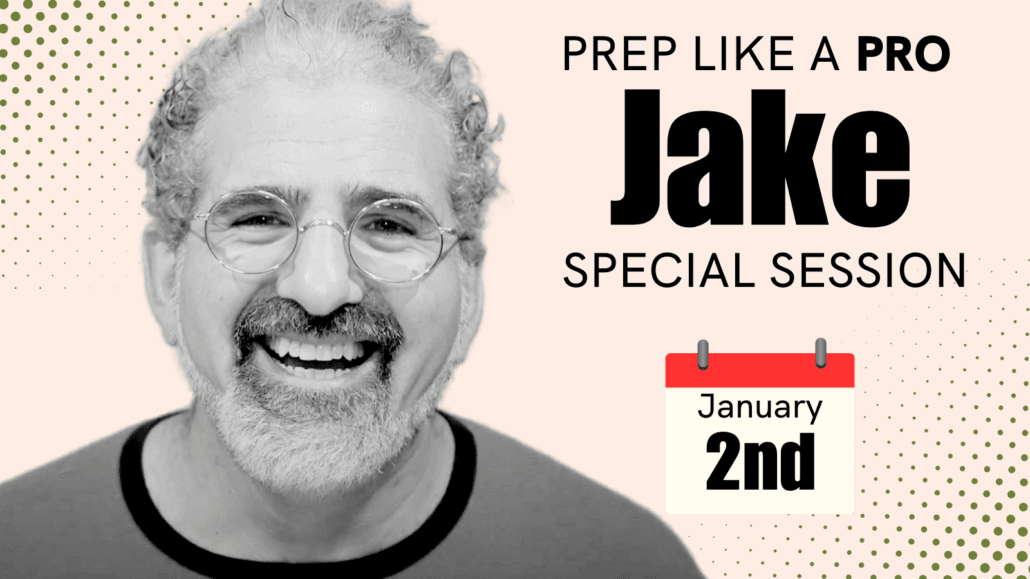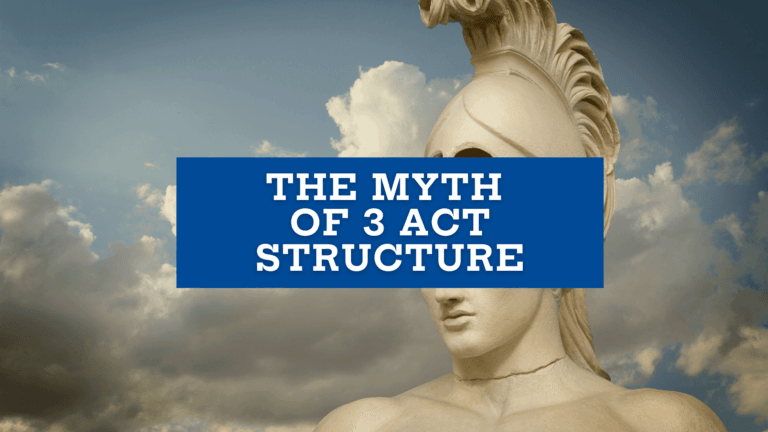The Mandalorian: Where Hook Meets Engine
This week, we’re going to be talking about The Mandalorian and the incredibly important screenwriting concept of hook. And we’re going to relate that idea of hook to another very important idea in TV writing, which is engine. So this is the podcast on where hook meets engine.
Let’s start off by talking about hook.
What’s the hook of The Mandalorian? Just like in your screenplay or pilot, the hook is the thing that hooks the audience, like hooking a fish.
It’s the thing that keeps them coming back again and again.
And what does the audience come back for again and again? They come back for a feeling.
The feeling is the internal hook, that’s the actual thing that the audience is buying. That’s why we are paying for Disney+. Because we want to watch The Mandalorian, we want to feel that Mandalorian feeling!
But you can’t go into a producer’s office and be like, “Let me tell you how this piece is going to make you feel.”
So what we use is this concept called hook, which turns into a little pitch for your show, capturing that big, ironic, super-cool element that’s going to deliver that feeling.
In The Mandalorian, that hook is so simple, right?
The simple hook, the simple premise of The Mandalorian is that the most hardened bounty hunter ever is going to fall in love with little Baby Yoda.
A guy who has no moral compass outside of the world of his Mandalorian religion, outside of the world where he doesn’t remove his helmet, a guy who has no ethical compass in relation to the people that he takes prisoner, that he sells for money, whose only value in the whole world is beskar armor—is going to fall in love with a cute little Baby Yoda who is supposed to be his prisoner.
So you have this wonderful, ironic hook of the hardened bounty hunter falling in love with the cute little Baby Yoda. And you can see that pretty much everything in The Mandalorian is built around that hook!
From the very first episode, by the time we get to the end of the pilot, we already know what’s going to happen. We already know, oh my gosh, it’s little Baby Yoda!
And we already know that this particular Mandalorian has a history, that he was a foundling, that he understands what it is to be an orphan, that he was taken in by someone who cared for him when his own parents were killed.
And so you take this character on this wonderful A-Z journey, where he is finding his internal compass—a man who has none. That’s the simple hook.
All of The Mandalorian is going to grow around that simple hook. It’s all about Baby Yoda. Tough Mandalorian, cute Baby Yoda.
That’s all it’s about—tough Mandalorian, cute Baby Yoda!
And just think about how much effort went into that?
There is not a frickin’ frame where a little Baby Yoda isn’t doing something cute, right? He’s eating something that’s ball-shaped. He’s getting into some kind of trouble. He’s doing some kind of adorable little look. He’s always doing something. Why? Because it’s about little Baby Yoda.
You lose little Baby Yoda and The Mandalorian is over. You lose little Baby Yoda, and The Mandalorian is just about a dude in a helmet whose face you can’t even see traveling the world having adventures.
It’s little Baby Yoda that gives the piece its feeling: What does it feel like when a hard guy goes soft?
What does it feel like when a hard guy starts to find something that he actually cares about?
What does it feel like when a rigid man starts to lose his rigidity, because of a little baby that he loves?
So that’s The Mandalorian. That’s the hook.
 If you were going to pitch The Mandalorian, you’re pitching the Bounty Hunter with a little Baby Yoda. But that’s not the engine.
If you were going to pitch The Mandalorian, you’re pitching the Bounty Hunter with a little Baby Yoda. But that’s not the engine.
That’s just one element of the engine, right? It’s just the main element of the engine. It’s like the gasoline that makes the engine go. But the engine has a lot of other elements, too.
It’s got pistons, it’s got spark plugs, it’s got fuel injectors, it’s got all kinds of other things going on, too.
So what are those things?
The basic engine of The Mandalorian in Season 1 is that in each episode, the Mandalorian is going to go to a different planet.
He’s going to that planet first to try to find Grogu, little Baby Yoda, then to try to rescue Grogu, little Baby Yoda, then in order to save Grogu from the many other bounty hunters who are coming to try to capture the baby.
So all he’s going to do each episode is travel to a different planet, meet somebody, and that somebody is going to have something he needs.
And because that somebody has something he needs, he is going to get sucked into some adventure with them in order to make a deal to get what he needs from them.
Those are the structural elements of the engine in The Mandalorian: quest to protect little Baby Yoda, different planet, different adventure, different featured character, a new friend.
That adventure is going to immediately turn into something much worse than he ever imagined. It’s going to get really, really crazy, the special effects are going to be frickin’ amazing! And at the end, somehow, they’re all going to get out of it.
And how they get out of it, quite frankly, isn’t going to make a lot of sense.
It’s not going to be perfectly choreographed, it’s not going to be super smart or complicated, but they’re always going to win.
They’re always going to fight their way out and it’s going to be beautifully shot and it’s going to look visually beautiful.
So, what we have at the center is another planet, another friend, another quest, another complication, another big shootout, another escape.
And that will lead them to the next planet and the next planet.
In Season 1, that engine is all built around a super objective—one simple desire, which is we’ve got little Baby Yoda. And people are coming to kill him. And he’s got to save them. And the whole galaxy is chasing him.
In Season 2, it’s no longer about everyone coming to kill him. It’s now about getting him back to the Jedi.
And each episode will be a different stop along the way, a new friend, a new planet, as he tries to find his way back to the Jedi.
So you can see this simple engine of The Mandalorian, right? Super objective for the character, take care of little Baby Yoda. New planet, new friend, new adventure. You can see where the engine is growing from.
You can also see where they’re spending their time.
They’re spending their time and love and money on little Baby Yoda. Really beautiful cinematography, gorgeous shootouts.
They’re not spending their time figuring out what is the really smart way to get out of this problem. It’s going to be relatively simple.
If the engine is so good, then why can The Mandalorian only run for two seasons?
Well, The Mandalorian has a little problem. Despite it being such a joy to watch, its engine is not really sustainable.
And this has nothing to do with the hook. The hook is the Mandalorian falls in love with little Baby Yoda. There’s nothing wrong with that, you can do that forever!
The problem is that the Mandalorian, by somewhere around Episode 4 of the first season, is already arced! He’s already changed! He is already 100% in love with little Baby Yoda!
Yes, he has some small emotional moves he can make.
You know there’s going to be a moment where he’s going to remove his helmet for that baby. You know, he’s going to have to do it. Even though his religion says he cannot remove his helmet. So there are little steps left to take.
But the big step has already been taken.
If what we’re really enjoying is watching a hardened Mandalorian bounty hunter fall in love with little Baby Yoda, and by Episode 4, the hardened bounty hunter just isn’t hard anymore, it’s going to be really hard to keep that engine from getting boring. It’s going to be really hard to keep this from just turning into The A-Team.
And not that there’s anything wrong with The A-Team. But remember how The A-Team worked, right?
It’s new town, new adventure, new people closing in. Who are the guest stars? What’s the problem? How are we going to get B.A. Baracus onto the plane? That’s The A-Team.
But audiences have come to expect a hell of a lot more than what we used to get away with in the 80s. Audiences have come to expect a hell of a lot more than just “serialized the-same-thing.”
They’re expecting journey, they’re expecting arc. And when you’re making a show with the budget of The Mandalorian, this is not a thrown-together A-Team production, this is a huge budget that looks like a Star Wars movie!
This is a tremendous investment. And so for the audience, the expectations come up with that. We’re expecting something freakin’ beautiful!
And they are actually able to deliver it for two seasons. But it would have been very challenging to go further.
Because as you start to get deeper into The Mandalorian, the audience starts to see the engine coming.
You want that to be happening under the surface for the audience—you don’t want the audience to be thinking, “Oh, I know what’s going to happen now”.
You want the audience to be wondering, to be curious, to be excited, and then pleasantly surprised by getting the same feeling again and again.
And if you watch The Mandalorian, as you start to get deeper into Season 2, even though you’re having a good time, even though it’s lovely—you’re starting to anticipate, “OK, they’re going to another planet. And they’re going to get called on to another adventure.” And you’re starting to realize that nothing is happening. Not that nothing’s happening physically, but that nothing’s happening emotionally.
 Now, perhaps, if they were able to truly write the greatest action sequences ever, and if it wasn’t just killing really easy stormtroopers the whole time, perhaps, if things got really hard, where we started to have fun figuring out how they were going to get out of it…. maybe you get a little more sustenance out of that.
Now, perhaps, if they were able to truly write the greatest action sequences ever, and if it wasn’t just killing really easy stormtroopers the whole time, perhaps, if things got really hard, where we started to have fun figuring out how they were going to get out of it…. maybe you get a little more sustenance out of that.
But even still, it’s going to be very challenging. It’s going to be very challenging because all you really have is action. And cute Baby Yoda.
And so what’s happening is cute Baby Yoda is starting to carry the whole Mandalorian series.
The Mandalorian is in a helmet; you can’t even see his face. The actor can’t even bring the emotion. And his actions have gone from hardened bounty hunter all the way to Mr. Softee Dad with this kid!
So, let’s pretend you wanted to run The Mandalorian for more than two seasons. Let’s pretend you didn’t want to just switch over and follow Boba Fett. How would you change the ending if you wanted The Mandalorian to run forever?
Let’s start by understanding what actually gets in the way of that engine going forever.
Well, the first thing is really simple, which is characters.
The Mandalorian only has two characters.
You might be thinking, “Whoa, whoa, whoa, there are way more than two characters! There are all these characters! There are all these people!”
But what I mean when I say there are only two characters is that there are only two characters that are really living and breathing in The Mandalorian.
There are only two characters that really matter in The Mandalorian—the Mandalorian bounty hunter and little Baby Yoda.
The other characters are what I call non-characters, which means they’re people who happen to be there. But they’re not fully formed.
The bad guy, Moff Gidian, is not fully formed. He’s not a complicated main character, he doesn’t have a real psychology to him in the way that Darth Vader did in the original Star Wars.
The Mandalorian’s friends are non-characters as well. They don’t have real characteristics to them, they don’t have clear wants and they don’t have clear hows independent of the Mandalorian. And because they don’t have clear wants, they don’t have that specificity of characterization.
They have that kind of generality of “badass dude,” right? And “tough-ass woman.”
They have this kind of general way of being rather than a specific one, they have a kind of general want, rather than a specific one.
You’ve got the lovely guy, Kuill, he meets in one of the early episodes where he has to ride the weird creature in the desert. And that guy generally wants some kind of peace.
But he doesn’t specifically want a specific kind of peace. I don’t exactly know what he wants from peace.
And I don’t exactly know what the pressure is that that puts on the Mandalorian. There’s no emotional pressure between those characters. There’s only whether he’s going to do it or not.
His bounty hunter boss friend, Greef Karga, he’s not a real character. He’s a broad character who kind of works for the Empire and kind of works with the Mandalorian, kind of has respect for him and kind of doesn’t.
He’s an in-between, wishy-washy, generally untrustworthy character. He’s a Lando Calrissian quality character, not a Han Solo quality character.
When you have these kinds of general characters like we see surrounding the Mandalorian, you lose your engine, because engine grows out of character.
 What’s basically happening is you’ve got these two main characters, and one of them is CGI and puppetry, and the other’s got to wear a mask! And they have to carry two whole seasons just based on the Mandalorian holding on to some degree of tough and little Baby Yoda keeping on being cute.
What’s basically happening is you’ve got these two main characters, and one of them is CGI and puppetry, and the other’s got to wear a mask! And they have to carry two whole seasons just based on the Mandalorian holding on to some degree of tough and little Baby Yoda keeping on being cute.
And so the problem is, eventually you’re going to tap out those resources.
Eventually, no matter how great the performance is, no matter how great your visual artists are, you’re going to run out of engine if you don’t have a super-strong supporting cast.
If you want to keep your series going, you have to think about more than just the hook, you have to think about each supporting character.
You can see the writers of The Mandalorian, as they start to get deeper into the series, start to bring the Mandalorian back to certain planets, trying to build those relationships.
The challenge is that the characters they are trying to build those relationships with are just a little too general. So they don’t really get built in the way that they need to, because the relationships just aren’t hot enough.
There’s not enough emotional transaction, because there’s not enough pressure between the wants and the hows of these characters and those of the Mandalorian.
We want to be able to say to ourselves, “Oh, wow! He’s gonna end up with this guy? Now, that’s gonna be an awesome challenge! And now the Mandalorian is gonna have to do this crazy thing, which he’s not used to doing. And that’s going to be uncomfortable and fun!”
Unless you just want to make The A-Team, you have to have an internal engine too, and that internal engine comes from the character.
And even if you think of The A-Team as a model, despite the super simple engine of what happens each episode, there is an internal engine created by the characters that’s missing from The Mandalorian. And it’s this engine that transcends the simple engine of the plot.
They’ve got the whole A-team of characters who constantly put pressure on each other. And that, in fact, was what we were actually connecting to with The A-Team!
With The Mandalorian you’ve got two characters trying to carry the whole load and that is just too darn hard in a series.
The other way that you can complicate the engine of the series in order to keep The Mandalorian going, would be to start to think about theme.
To start to think about “What if this is really about fatherhood and foundlings. What if this is really about unlikely fathers, unlikely parents? What if this is really about becoming hardened because of loss?”
Then you could start to ask yourself, “OK, well, what are the really hot relationships that I could build in relation to that theme?”
So for example, if the problem is: Can the Mandalorian actually become a father? Then you could start to ask yourself, “How does the Mandalorian fail Grogu? How does the Mandalorian fail little Baby Yoda?”
How is the Mandalorian’s lack of empathy and morality affect Grogu? How does that affect him as a father? How does he disappoint Grogu?”
There’s a wonderful moment where they try this—with the first Jedi that the Mandalorian and Grogu meet—the writers try to raise the idea that maybe Grogu’s attachment to the Mandalorian might lead him eventually to the dark side of the force.
So you could develop that—how is Grogu starting to move to the dark side?
How is the pressure returning?
How is the Mandalorian falling into his old patterns?
And how is that complicating this relationship?
In this way, you could keep the engine of The Mandalorian going by not allowing the main character, the Mandalorian, to fully arc.
Instead you would let him get close… and let him fail… and let him get close again… and let him fail—so that we could feel the journey and the pressure between his bounty hunter values and his father figure values, again and again in each episode.
And then you could start to ask, well, who are the characters who really fit that engine?
And you’ll start to see there are some good characters in The Mandalorian—characters that serve the engine of the series. They’re just not the ones that get developed.
There is the woman who makes the Mandalorian’s armor, his spiritual advisor.
Unfortunately, she disappears from the piece in Season 2, but she is an important figure because she’s actually the mother figure.
So you could complicate that relationship and start working on building that relationship in order to put pressure on the Mandalorian.
She’s the one who believes in the code, believes in ‘This is the way,’ believes in keeping your helmet on.
In Season 1, what they do at the end of Season 1 is use her to propel the external structure of Season 2.
But they miss an opportunity, a really wonderful opportunity, to add pressure in Season 2, between his old belief system, which she represents as the only mother figure, the only parental figure, he’s had since his parents were killed. And this new way, pulling at him—between his responsibility as a “parent” and his desire to live up to the expectations and the “way” of his own “parent”.
Now that is a very human conflict that every human being wrestles with—and one with enough emotional power to drive endless seasons of The Mandalorian.
You can also build a more substantial engine for The Mandalorian by looking more closely at the world of the piece… particularly at the relationship with the Empire.
 The relationship with the Empire and the effects of the rebel’s success in destroying the Death Star is another loose thread that the writers almost use, and then abandon.
The relationship with the Empire and the effects of the rebel’s success in destroying the Death Star is another loose thread that the writers almost use, and then abandon.
There’s this idea that when we saw Star Wars, Episode 4, we were 100% with the rebels. But five years later, in the aftermath of the Death Star being destroyed and the Empire falling, we don’t have a perfect new universe. We have a desperately flawed one, a violent one. There’s violence and terrorism everywhere.
There’s a need for bounty hunters everywhere. We have such a mess. We’ve gotten rid of the evil overlord, but we’ve replaced it with nothing.
So you could use the thematic question that grows from that world to build the ending.
We could ask ourselves: “So we actually need some dark father leaning over us to tell us what to do to prevent our darkest impulses. Or is there actually another way to find order in the galaxy?
And how does that relate to the Mandalorian?
How does that relate to his father-son relationship?
And is he going to be the dark father or the light father and how is that going to affect Grogu?”
These are the kinds of questions that you ask if you want to take a great series like The Mandalorian and complicate it.
And please, understand me properly, I enjoyed the hell out of The Mandalorian! And I’m sure that you did too. It is a fabulous ride. And it is a wonderful journey.
And it is some of the best cinematography you’ll ever see in an action-adventure TV show, you just don’t expect things to be so beautifully shot, the action sequences are amazing!
And the characterization of the Mandalorian’s character is amazing. The world-building is amazing.
There’s so much to love about this piece. But it’s also a limited engine. And you can get away with that if you’re Jon Favreau. But not if you’re a normal human being who walks the earth, trying to sell your first TV Series.
To contrast The Mandalorian with one other series, think about Star Trek. Think about the way that Star Trek works season after season after season, and you’ll see that it came back to this one very simple thing, which is theme.
This theme of respect for other kinds of people, other kinds of civilizations.
And the many characters, Bones and Spock and Captain Kirk, these different points of view in the world, battling with new scenarios and new cultures and people who see the world in different ways, all trying to find a synthesis that’s going to deal with those differences in a good way.
So if we really want to look at where The Mandalorian can be taken to the next level, we really want to look at theme.
And that’s probably the most important lesson that we can learn from this.
You can violate 1000 rules and still make a great series. You can violate 1000 rules!
If your writing is good enough, and your direction is good enough and your actors are good enough. And in this case, if your CGI team is good enough, you can violate as many rules as you want.
You can go “Hey, I really am just driving with two characters. And I didn’t really put much love into the rest of my cast.”
“Hey, I put a lot of love into the way I shoot the action sequences, but I didn’t put a lot of love into the actual actions that the Mandalorian has to take to rescue himself.”
“Hey, I put a lot of love into making Baby Yoda cute, but I didn’t put a lot of love into thinking about what this piece is really about.”
“Hey, I’ve got a bunch of loose threads that are really awesome, but I didn’t really worry about tying them together or really pushing on them or questioning them.”
Yes, you can get away with that.
But just think about how much more profound The Mandalorian would be if it had a little bit of the spirituality of the force in it.
If it really asked that important question about the need for law and order versus the need for kindness and individuality and rebellion?
What is the need for the dark side versus the need for the light side, and is there actually room for both?
What is the role of the father? What does the father really supposed to do?
And how do we transcend our own pasts and our own teachers and our own mentors in order to become the kinds of parents that we want to be?
What is the effect that our belief systems and the flaws of our belief systems have on those around us?
And if you start to think of those questions, you’ll start to see not only what’s beautiful about The Mandalorian but also the untapped potential of The Mandalorian.
The places that that piece came so close to going, and had it gone there, not only would it have been equally enjoyable, it also could have run forever and ever and ever.
It would have had an engine that would have sustained season after season after season, and we would have never gotten tired.
I hope that you enjoyed this podcast. If you’d like to study with me, please come join us every Thursday night. We have a wonderful event, It’s now called Thursday Night Writes. It’s been recently renamed! It’s every Thursday night at 7 pm Eastern Time, 4 pm Pacific. It’s totally free. If you can afford to make a donation we’re grateful and we use it to defray the cost of ProTrack and our classes for students who have been affected by COVID. If you can’t afford to make a donation come for free, check us out, have a great time, learn about our classes: Our Master Classes, our Mentorship Program, meet our teachers, do some writing exercises, become a part of our community. It’s a wonderful experience and you can find more about that at writeyourscreenplay.com
Edited for length and clarity.



